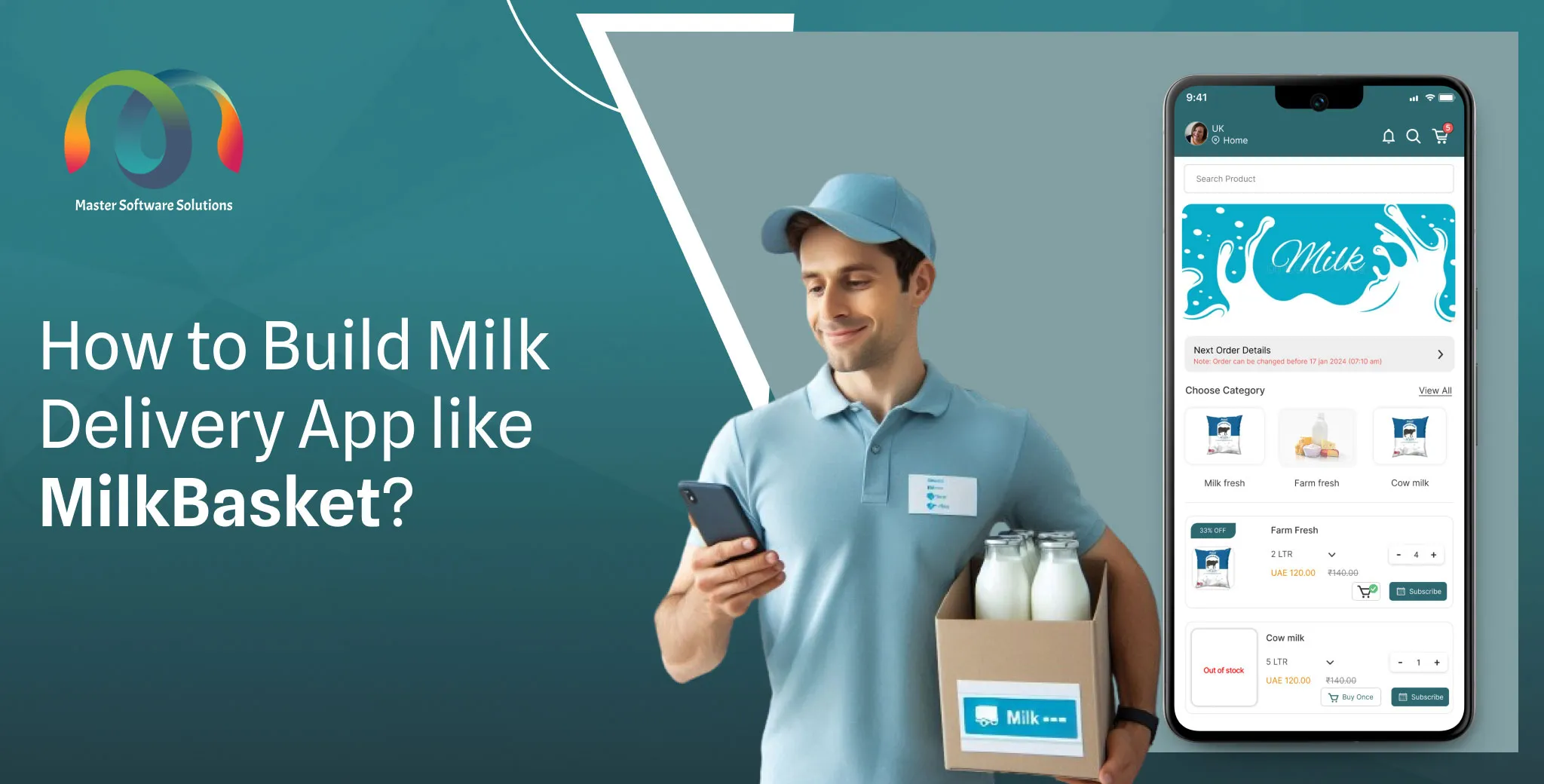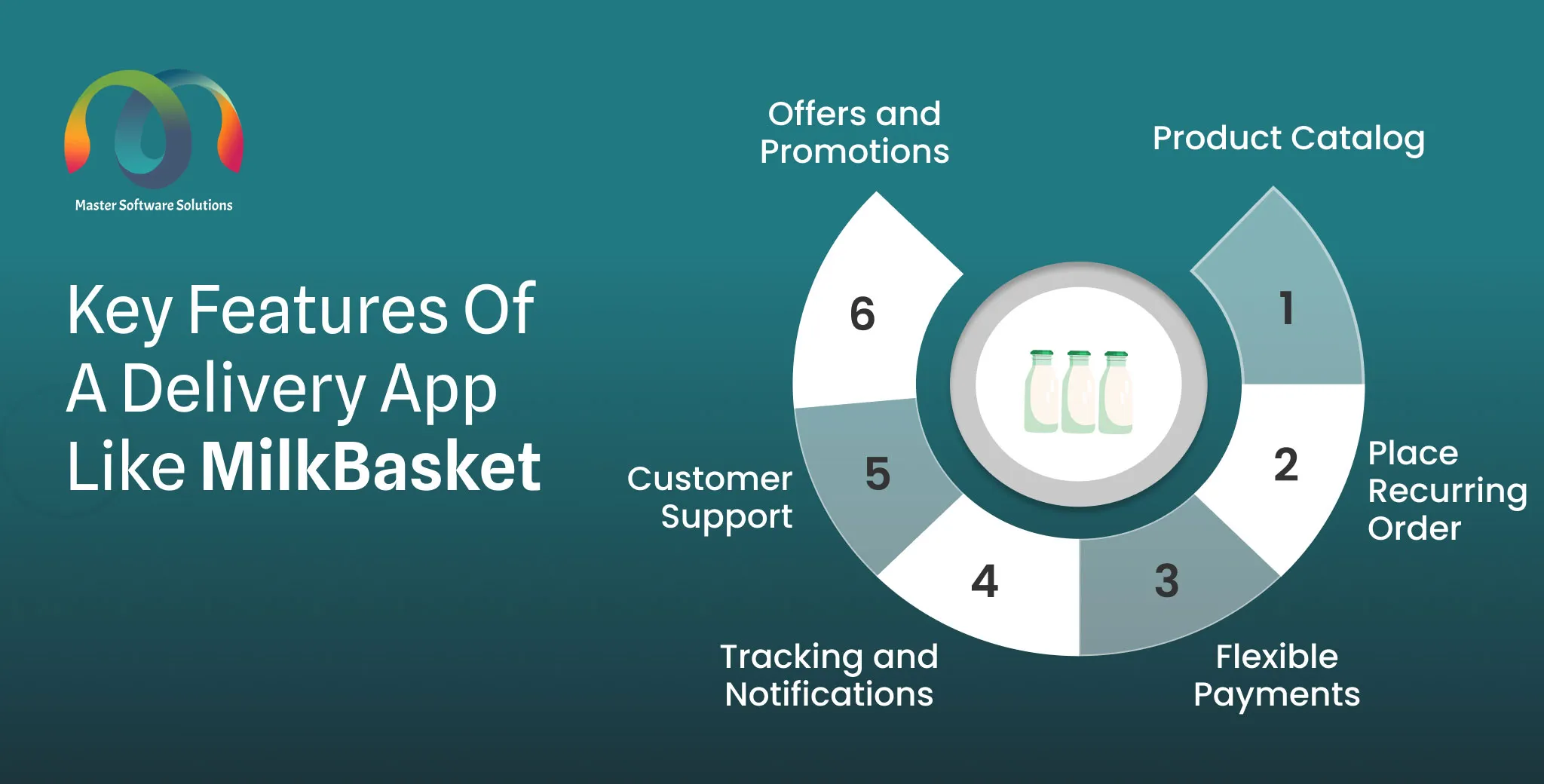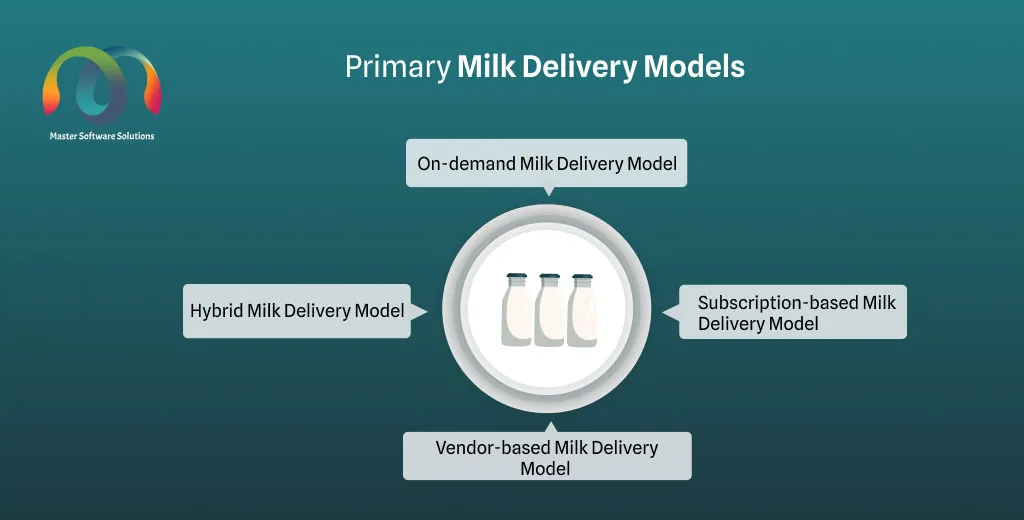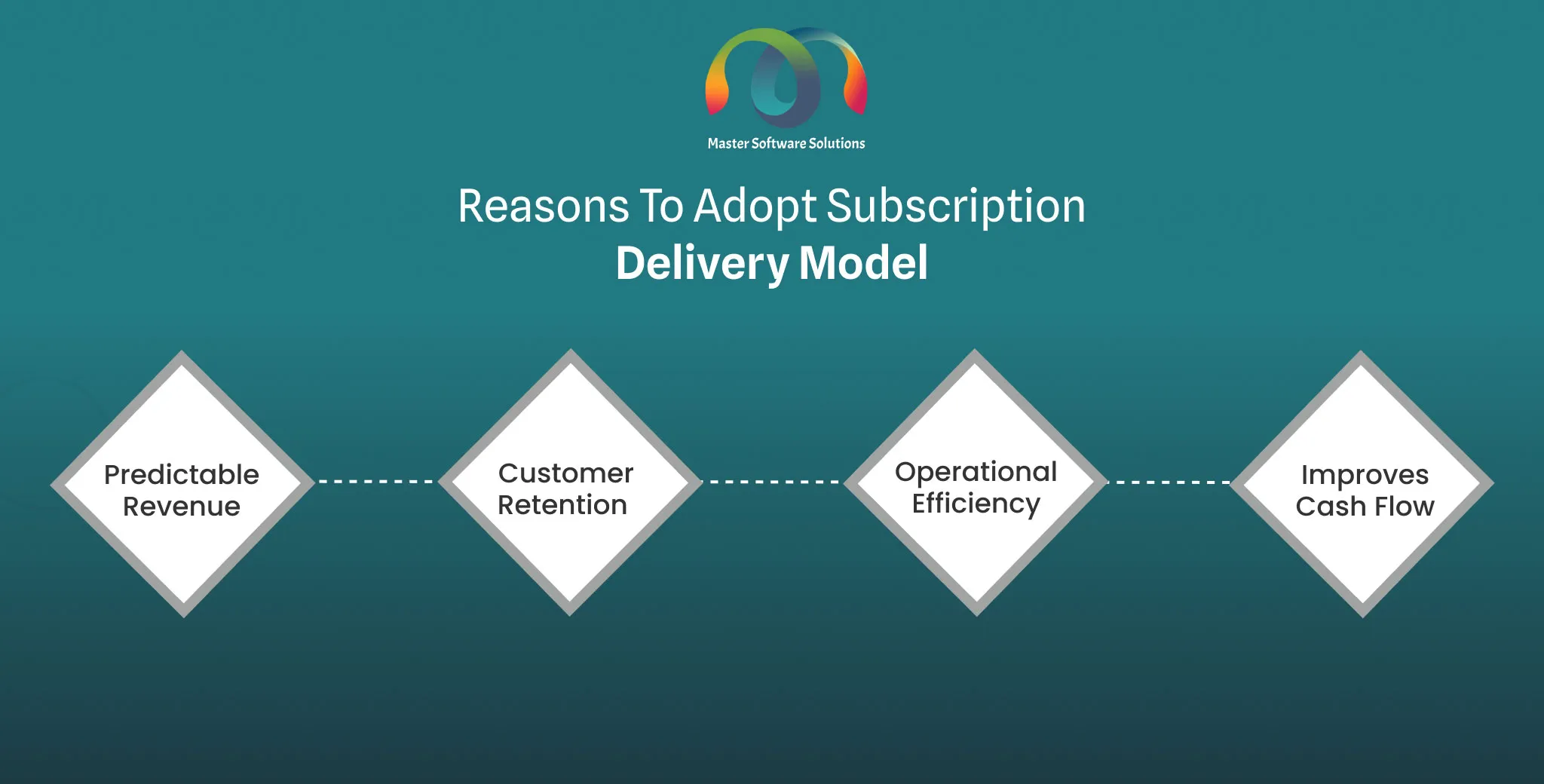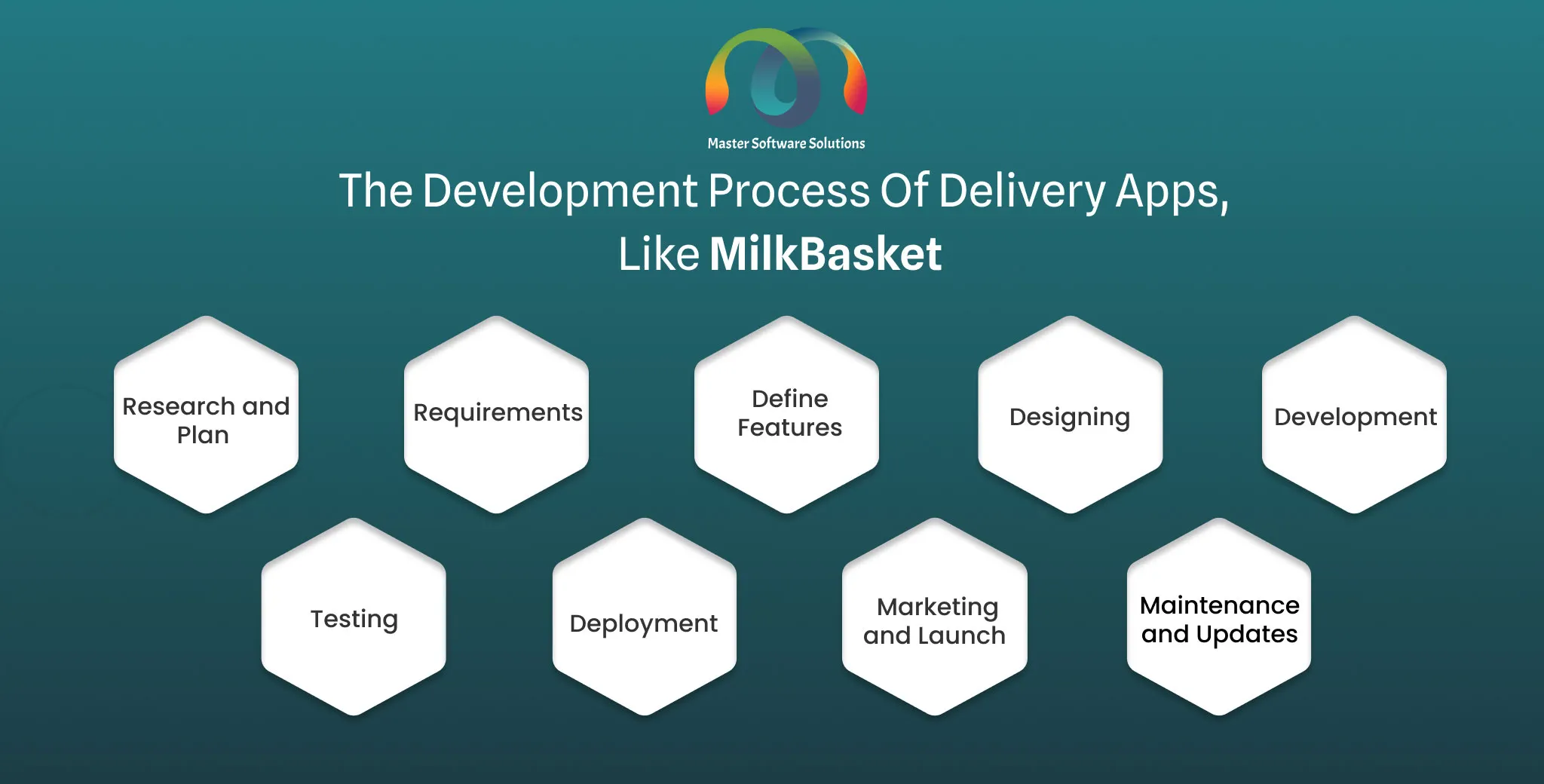How to Build Milk Delivery App like MilkBasket?
The milk delivery industry has experienced a significant shift from traditional to modern delivery methods. Building a milk delivery app like MilkBasket can be a profitable opportunity for dairy businesses looking to step into the growing doorstep delivery service market.
Milk is an early morning need and is required almost every day. MilkBasket is a milk delivery app that works on subscription-based scheduled deliveries. These delivery apps streamline the process of ordering, delivering, and managing milk subscriptions.
Table of content
- What is a milk delivery app?
- How many milk delivery models are there?
- Why focus on the subscription delivery model?
- Features of a delivery app like MilkBasket
- Benefits of implementing milk delivery apps like MilkBasket
- What is a milk delivery app development?
- The development process of MilkBasket, like the App
- Bottom line
What is a milk delivery app?
A milk delivery app is a mobile application designed for iOS and Android devices to streamline business operations. These business processes include ordering, managing, and delivering milk and other dairy products to customers. The delivery app for milk leverages technology to offer a seamless and convenient way for customers to receive fresh milk at their doorsteps.
The milk delivery app works in sync with the admin panel and the delivery driver, ensuring a seamless flow of information and real-time updates to the business manager. It aims to boost business efficiency, productivity, and profitability.
Features of a delivery app like MilkBasket
The application for milk delivery offers various features to provide a seamless and convenient user experience while ensuring efficient business operations. It provides a comprehensive and user-friendly platform that meets the needs of modern consumers while optimizing business operations. Key features of a delivery app like MilkBasket are:
- Product Catalog – The app includes a detailed listing of milk and dairy products, groceries, and other essentials. The products are listed along with product descriptions, pricing, images, and nutritional information
- Place recurring orders – Customers can set daily, alternate, or custom-day deliveries with an “n” number of deliveries, that can exceed months and even years. They can also select an infinite number of deliveries. Customers have the flexibility to adjust delivery dates and frequencies as needed.
- Flexible payments – The platform supports multiple payment gateways, allowing customers to pay via various online payment methods, including Gpay, Stripe, or PayPal, credit/debit cards, digital wallets, net banking, and cash on delivery. It ensures that all transactions are encrypted and secure.
- Tracking and notifications – The app enables customers to live-track orders. Customers receive order status updates, including order status, delivery time, and other updates (promotional) in real-time.
- Customer support – The app allows messaging API integrations enabling clear and direct communication between the customers and the business. It supports communication via chat on WhatsApp for any query or issue. Customers can provide feedback and suggestions that can be used for continual development.
- Offers and promotions – You can provide regular offers, discounts, and promo codes to attract and retain customers. Offer rewards to loyal customers with points and exclusive offers.
Benefits of implementing milk delivery apps like MilkBasket
Milk delivery apps for customers aim to enhance convenience and satisfaction, foster loyalty, and increase business growth. It is a modern approach that aligns with the needs and preferences of today’s tech-savvy consumers and provides a competitive edge. Here are the key benefits:
- Convenience – The customer can place orders anytime, and from anywhere, with just a few clicks on their smartphones. It enables them to set up recurring orders and eliminates the need for repeated manual ordering. This ensures a consistent supply of milk at customers’ doorsteps.
- Saves time – Customers can schedule deliveries conveniently, saving time that is spent shopping at the store. Real-time updates on order status and delivery times keep customers informed without any effort.
- Customizations – Customers can customize their delivery schedules, quantities, and types of milk according to their preferences. Offering options to add special requests or notes ensures personalized service.
- Enhanced customer experience – A user-friendly app interface ensures seamless and hassle-free browsing, selecting, and ordering products. Customer data enables you to provide personalized recommendations and services.
- Reliability – Guarantees that placing recurring orders will never run out of dairy products. Offering reliable delivery schedules builds trust and reliability in the service.
How many milk delivery models are there?
Implementing a milk delivery model in a milk delivery business depends on its goals and objectives. Milk delivery services can be categorized into various models, designed to align with customer needs and operational efficiencies. The primary milk delivery models are:
- On-demand milk delivery model – Customers place milk orders as per requirements. It offers flexibility for customers who do not need regular deliveries. The main focus of the delivery model is to deliver orders quickly.
- Subscription-based milk delivery model – Customers sign up for regular deliveries at specific intervals. It ensures a consistent supply of milk without ordering repeatedly. It allows customers to adjust the delivery frequency, quantity, and type of milk according to their preferences.
- Vendor-based milk delivery model – Local vendors or dairy farms supply and deliver milk, supporting local businesses and ensuring fresh, locally sourced products. It involves direct delivery from farms to customers without an intermediary warehouse.
- Hybrid milk delivery model – Customers can place regular subscription options and on-demand orders. The hybrid models allow customers to switch between frequent and sporadic deliveries.
Why focus on the subscription delivery model?
Focusing on the subscription delivery model for milk delivery services offers several distinct advantages for businesses and customers. It ensures stable and consistent revenue, operational efficiencies, and an enhanced customer experience. It is a win-win scenario, making the subscription model an attractive and strategic choice for the milk distribution business. Reasons to adopt the subscription delivery model:
- Predictable revenue – Provides predictable and steady cash flow with regular, recurring payments. It makes forecasting revenue and managing finances with consistent income possible.
- Customer retention – Subscriptions foster engagement, resulting in long-term customer loyalty. It encourages regular customer interactions and personalized services, reducing the likelihood of leaving.
- Operational efficiency – Predefined delivery schedules increase route planning effectiveness, and reduce fuel consumption and delivery time. Predictable demand patterns make managing stock levels easy.
- Improves cash flow – Most subscription-based milk delivery businesses follow the prepaid payment type. This allows them to collect payments in advance, improving cash flow and reducing financial risks. It ensures a defined level of revenue commitment from customers.
What is a milk delivery app development?
Milk delivery app development involves designing and creating mobile and web ordering applications, that enable customers to place, manage, track, and deliver milk to their doorsteps. It integrates various features and functionalities, ensuring seamless and efficient user experience and backend operations.
The development process of delivery apps, like MilkBasket
Research and plan
Do your due diligence, and understand the target market, customer preferences, and competition. Collect information about the app and study its features, functionalities, and user experience.
Requirements
Define your requirements and plan accordingly. To create an app like MilkBasket, select the subscription-based scheduled delivery model. Understand the user’s perspective to define the core functionalities of the application. Consider performance, scalability, and sustainability.
Define Features
There are several key features to consider to ensure a seamless and user-friendly customer experience and efficient business operations when developing milk delivery software. It consists of three platforms that work together in sync, ensuring a seamless flow of information and operations. These platforms are:
Admin Panel – It is a web panel for business owners. This business dashboard gives complete visibility and control of the business. The major features you should consider for the admin panel are:
- Order management
- Payment collection and reconciliation
- Stock controlling
- Delivery planning
- Route optimization
- Promotional features
- Reports and analytics
Customer app – It is a white-labeled mobile application for customers to place and manage their orders. Offering a user-friendly customer interface fosters transparency and enhances customer expectations. The features a customer app should have are:
- Order placement and modification (one-time and subscription order)
- Multiple payment options
- Notifications and reminders
- Live order tracking
- Real-time order status updates
- Refer and earn
- Feedback
Driver application – It is a mobile application for the delivery driver. It includes all the delivery information, order details, customer information, and delivery address. The features of the driver app you should consider are:
- Run-time order modification
- Electronic proof of delivery
- Buffer stock management
- Empty glass management
- Payment collection (cash and online payments)
- Record payments (cash and online payments)
Design
Create an easy-to-use interface that is easy to navigate. Develop wireframes and prototypes to visualize the layout and workflow of the app. Consider visual elements, including colors, fonts, and icons.
Development
- Choose appropriate technologies for front-end, back-end, and database. The front end consists of React Native, flutter, Swift, and Kotlin; the database consists of PostgreSQL, MongoDB, and Firebase; and the back end consists of Node.js, Django, and Ruby on Rails.
- Develop server-side logic, database schemas, and APIs for backend development.
- For front-end development implement the app’s UI and integrate it with the backend services.
- Integrate third-party services for payments, geolocation, and notifications.
Testing
- Test each component for functionality thoroughly. Ensure they are working together as expected.
- Validate the app with end-users gather feedback and identify issues. This type of testing is known as User Acceptance Testing (UAT).
- Assess the app’s performance under different conditions.
Deployment
- Prepare apps for submission to app stores (Apple App Store and Google Play Store)
- Deploy backend services to a cloud provider (AWS, Google Cloud, Azure)
Marketing and launch
- Market your service and app through social media, email campaigns, and partnerships.
- Official launch of the app and promote it through various channels.
Maintenance and updates
Monitor the performance of the app and gather user feedback.
Release updates to fix bugs, add new features, and improve performance.
Provide ongoing support for your customers.
Key aspects to consider while developing a milk delivery app
- Privacy and security – Use encryption and implement standard business practices for user data protection.
- Scalability – Create the app to accommodate increasing users and orders.
- Compliance – Adhere to relevant regulations and standards, such as GDPR for data protection.
Bottom-line
Developing a milk delivery app like MilkBasket requires thorough planning and execution, ensuring it meets your needs and those of your customers. You can transform your app into a go-to platform for convenient and dependable milk delivery services by implementing the right strategies and taking a customer-centric approach. If you also want to develop a milk delivery app for your dairy distribution business and are looking for expertise, schedule a call with us.
